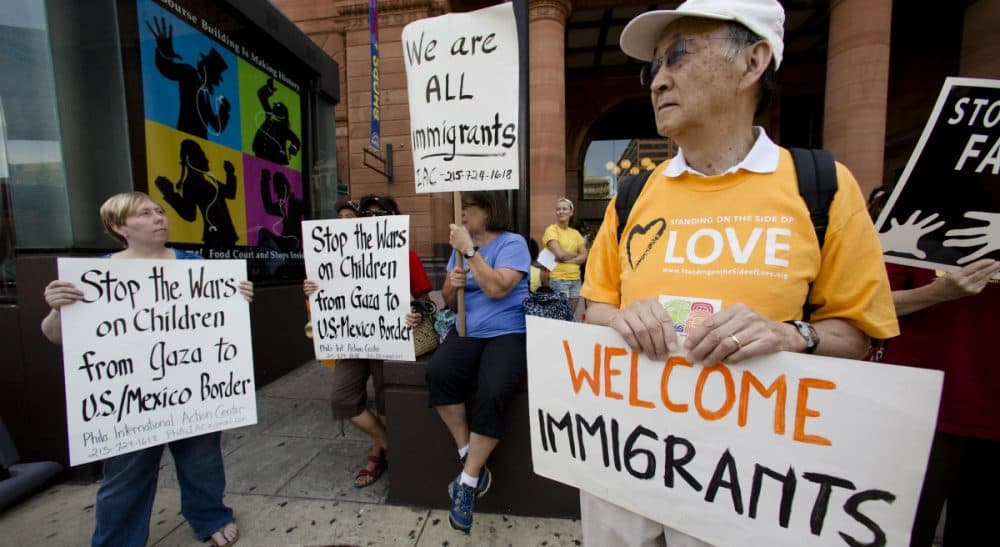Advertisement
The Second Great Migration

One of the peculiarities of the national fracas over illegal immigration is how we ignore the fate of the immigrants themselves. Nowadays, so much of the discourse — actually, a cacophony — focuses on President Obama’s executive orders and how the presence of so many immigrants, mostly Hispanic, affects American culture. But there is another story, and that’s about the immigrants themselves.
One of the peculiarities of the national fracas over illegal immigration is how we ignore the fate of the immigrants themselves.
We’ve been there before. The Great Migration of African-Americans from the old Confederacy to northern and western cities through much of the 20th century bears striking resemblance to Latino (mostly Mexican) immigration. And in that comparison is a troubling lesson.
People from Mexico, the Caribbean and Central America — altogether, about 88 percent of the 53 million Hispanics in the United States — migrated mainly because of harsh economic conditions in their birthplaces. (Currently, 21 million Latinos in the U.S. are foreign born.) The Spanish colonists and their progeny established what was called the encomienda, a farm labor system that amounted to virtual slavery through Spain’s vast empire. The system persisted into the 20th century, and even today, the indigenous populations and other poor people suffer from the inequality that system bred.
The encomienda was very similar to Jim Crow in the South, the institutionalized racism that succeeded slavery after the Civil War. It, too, use debt bondage and wage peonage, social segregation and other forms of oppression. It was a remarkably durable institution, legally, politically and socially, and it was dismantled only with the civil rights legislation of the 1960s.
Jim Crow drove millions of its victims north. It was not an easy escape, as Isabel Wilkerson describes in her epic account of the Great Migration, "The Warmth of Other Suns." Black sharecroppers had to sneak away from The Man, into dingy railroad cars that would take them to Chicago, Detroit, New York or other cities far from the South. The reception in those places was not especially kind. But work in the industrial north was plentiful, and while there was social discrimination aplenty, it was not as cruel as in the South.
Six million blacks so migrated between about 1910 and 1970, and while many millions of the migrants and their offspring achieved a much better life than their parents and grandparents had in the hardscrabble and often brutal conditions in the former Confederacy, many have not escaped poverty, discrimination or crime-infested lives. It’s a grand and ennobling story, but not without tragic outcomes.
The encomienda, rooted in racism as well, sent many of its victims northward. Mexicans and others began to migrate decades ago, and until the landmark 1965 immigration reform — done, it’s often said, to show the world we wouldn’t discriminate against Asians and Africans anymore — Mexicans and others from the Americas enjoyed nearly unfettered access to the United States.
Advertisement
Livelihoods, mainly in the agricultural sector, were available to Latinos, but it was and is an often bleak and exhausting life. Educational opportunities were constrained. The Anglo-run education systems of the southwest viewed the Mexicans as suitable gardeners, field hands and maids, and schools were geared to yield that result. Social discrimination has been powerful. Housing segregation kept Hispanics in “bad” neighborhoods and neglected schools. This pattern, so apparent in the treatment of African-Americans, has conditioned the lives of many, if not most, of the immigrants from south of the border.
It’s another grand tale, this Second Great Migration, and it should be embraced as a vivid realization of the American Dream.
It’s another grand tale, this Second Great Migration, and it should be embraced as a vivid realization of the American Dream. Too many native-born Americans, however, perhaps a third, are opposed to a path to citizenship for unauthorized immigrants and are neglectful of those, like students, who are striving for better opportunities. Housing, educational and employment discrimination against Latinos remains potent.
And that is the danger. Daniel Patrick Moynihan once described American black ghettos as “a tangle of pathology,” and what created that desperate circumstance was not merely racism, but its manifestation in dead-end schools and jobs, drugs and crime. There is no iron rule that this must happen to Latino immigrants (nor persist with African-Americans), but the danger is nonetheless apparent.
To avoid the fate of an underclass is, of course, mainly the responsibility of the immigrants themselves. But the rest of us should begin to understand who our immigrant population is — where they came from and why, their aspirations, their contributions to American society — in order to help this new (and great) migration succeed for all.
